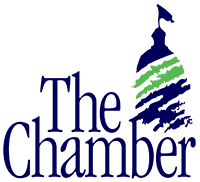Events Upcoming
New Members
Today's older workers are better educated and living longer than any previous generation. They also want to remain in the workforce longer, but discrimination and outdated assumptions are making that a tricky proposition for many experienced employees, and overt acts of ageism are only expected to get worse as the number of older workers grows.
A recent investigation by ProPublica and the Urban Institute found that 56 percent of workers over age 50 report that they were pushed out of their jobs by their employers before they were ready to retire. Some of the comments heard by those employees include:
"Older workers can't handle the day-to-day demands of the job."
"They can't be retrained and are too hard to manage."
"They cost too much money in salary and benefits."
"They create too much risk of an employment discrimination claim."
Yet companies that allow biases to run rampant are sabotaging their ability to hire and retain talented teams at a time when they're facing three critical trends: record low unemployment, restricted immigration and an aging workforce that wants to remain actively employed.
Savvy company leaders are meeting those recruiting challenges by hiring and retaining more older workers, including those in their 60s and 70s.
In fact, by 2024, the U.S. labor force is projected to grow to about 164 million people, of whom about 13 million are expected to be ages 65 and older, according to the U.S. Bureau of Labor Statistics. And although they make up a smaller number of workers overall, the 65-to74-year-old and 75-and-older age groups are projected to experience faster labor force growth rates annually than any other group.
Consider Darlyne Robertson's career to understand why. "She joined us in her late 50s as a customer service associate and continues to enjoy her job 17 years later in her mid-70s," says Dave Walker, chief people officer at 1-800 Contacts, a Utah-based retailer that employs more than 350 customer service agents.
"Darlyne is terrific at her job and offers a perspective and stabilizing influence to her team, which adores her," Walker says. "She brings a wealth of experience as her team works to solve everyday problems in order to excel at their jobs and improve as a team." Walker adds that Robertson loves her job so much that she has passed up higher-level roles.
Associates ages 50 and up make up nearly 20 percent of the company's call center staff, and about 10 percent of call center workers are over age 60.
Tips for Fostering an Age-Diverse Workforce
The EEOC recommends the following strategies to increase age diversity in the workplace:
Assess aspects of your organization's culture, practices or policies that may reveal outdated assumptions about older workers. The Center on Aging & Work at Boston College and AARP partnered to develop such an assessment tool.
Examine your recruitment practices. Does your website include photos of an age-diverse workforce? Do your job applications ask for age-related information such as date of birth or when a person graduated? Is your interview panel age-diverse? Train recruiters and interviewers to avoid ageist assumptions, such as that a younger worker will work for a lower salary or that an older worker will not remain on the job for long.
Include age as part of your diversity and inclusion programs and efforts. PricewaterhouseCoopers' 2015 Annual Global CEO Survey found that while 64 percent of 1,322 CEOs in 77 countries had a diversity and inclusion strategy at their company, only 8 percent included age in those strategies. Offer learning and development, including career counseling and reverse-age mentoring, to all employees.
Foster a multigenerational culture that recognizes ability regardless of age and rejects age stereotypes, just as it would reject stereotypes involving race, disability, national origin, religion or sex.
For more on this article, click https://www.shrm.org/hr-today/news/all-things-work/Pages/how-to-avoid-ageism.aspx.
